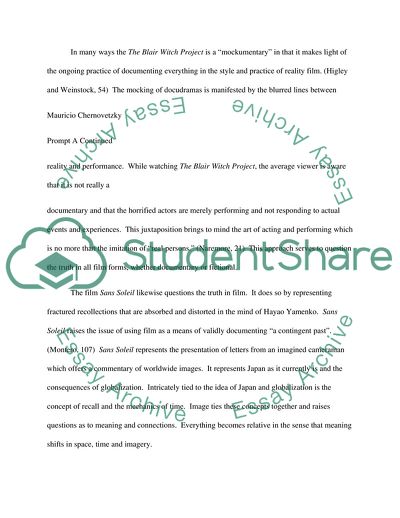Cite this document
(Analysis of Documentary Film Assignment Example | Topics and Well Written Essays - 1250 words, n.d.)
Analysis of Documentary Film Assignment Example | Topics and Well Written Essays - 1250 words. https://studentshare.org/visual-arts-film-studies/1724897-vis-152-fact-and-fiction-2-film-relate-paper
Analysis of Documentary Film Assignment Example | Topics and Well Written Essays - 1250 words. https://studentshare.org/visual-arts-film-studies/1724897-vis-152-fact-and-fiction-2-film-relate-paper
(Analysis of Documentary Film Assignment Example | Topics and Well Written Essays - 1250 Words)
Analysis of Documentary Film Assignment Example | Topics and Well Written Essays - 1250 Words. https://studentshare.org/visual-arts-film-studies/1724897-vis-152-fact-and-fiction-2-film-relate-paper.
Analysis of Documentary Film Assignment Example | Topics and Well Written Essays - 1250 Words. https://studentshare.org/visual-arts-film-studies/1724897-vis-152-fact-and-fiction-2-film-relate-paper.
“Analysis of Documentary Film Assignment Example | Topics and Well Written Essays - 1250 Words”. https://studentshare.org/visual-arts-film-studies/1724897-vis-152-fact-and-fiction-2-film-relate-paper.


